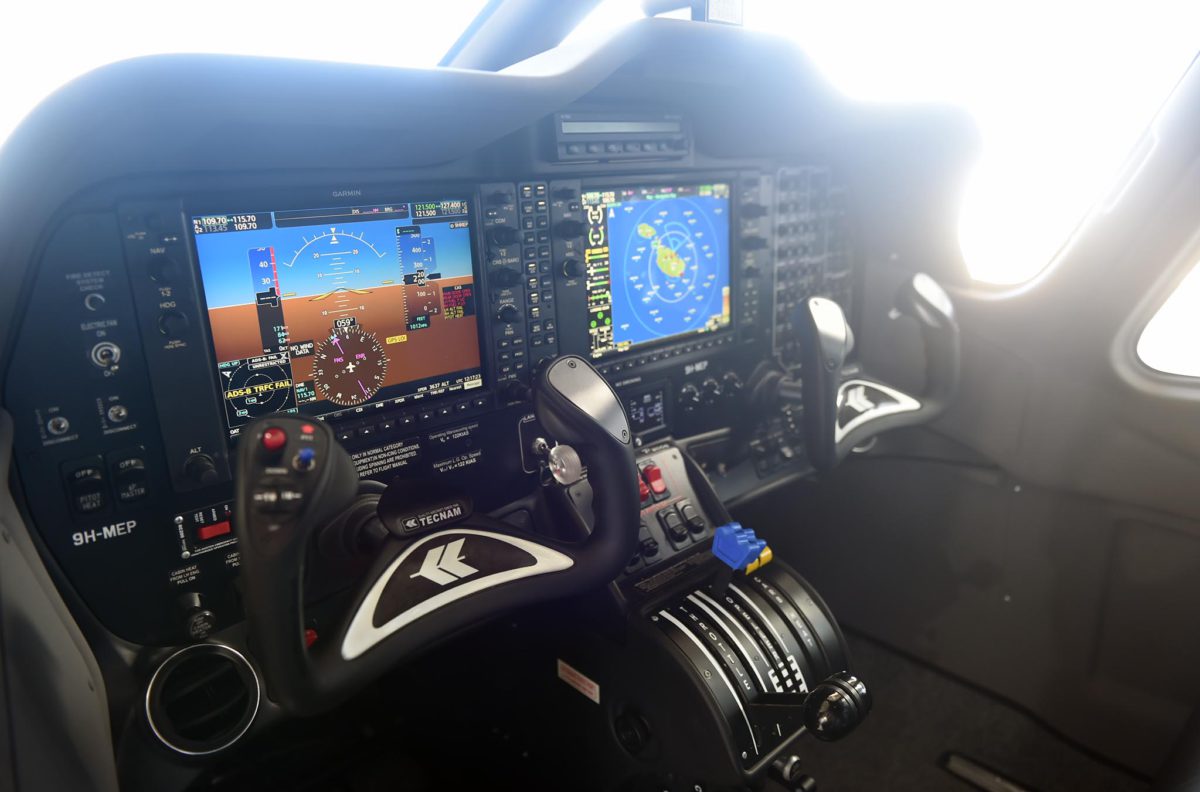Malta’s aviation industry has grown from strength to strength in recent years. Since the aviation industry is highly interconnected with Malta’s tourism industry it is difficult to quantify its size in isolation. Still, it is not hard to observe its significant contribution to the local economy, with over 750 registered aircraft, and more than 40 airlines registered with operating licences in Malta. Most recently available data states that aviation accounts for more than 2.5 per cent of the country’s GDP, according to the Central Bank.
This is the first entry of Industry ABC, a bi-weekly series which take a deep dive into a selection of Malta’s industries in alphabetical order, giving you holistic view of what’s involved in each.
What attracts airlines to Malta is not just its strategic position at the cross-section of three major geographic regions (Europe, North Africa and the Middle East) but also its regulatory framework and tax system.
The aviation sector is regulated by the Civil Aviation Directorate, a unit that operates within Transport Malta.

Regulatory Framework
The regulatory framework surrounding aviation is fairly competitive, offering airlines a number of advantages in Malta.
It allows for the registration of aircraft which are still under construction and those which are not operational. They can be registered by their owner, operator, or buyer. It also allows fractional ownership of aircraft, allowing multiple owners.
There is also a range of tax benefits, such as accelerated rates of tax depreciation for aircraft interiors and engines, fringe benefits exemptions, and VAT benefits, among others.
Malta is also a signatory of the Cape Town Convention, giving legal certainty to owners, operators, and those involved in leasing.
There is also, of course, the corporate tax refund system, that allows certain companies to pay effectively only five per cent instead of 35 per cent, due to Malta’s tax refund system applicable to foreign-owned companies headquartered domestically.
This results in a number of pull factors for the aviation industry to Malta, which also benefits from being part of the EU’s single market.
At the time of writing, Malta’s Civil Aviation Directorate (CAD) has 765 registered aircraft, and 45 airlines with an air operator certificate (AOC). Each of the airlines has an operating licence (OL). A divergent case is Wizz Air Malta, which has an OL with the CAD, but obtained its AOC from the EU Aviation Safety Agency instead (EASA).

Diversification of aviation-related activities
Malta’s position within the Mediterranean does not only have maritime benefits.
Furthermore, it is not just a hub for airline operators, but also for maintenance, repair & overhaul (MRO), training, R&D, drones, and even component manufacturing.
There are local facilities such as the Safi Aviation Park, a massive 240,000 sqm space for MRO purposes, which has seen companies like SR Technics and Medavia Technics set up shop there.
Malta is also home to Lufthansa Technik Malta, a joint venture between Air Malta and Lufthansa Technik AG. Here they’ve established their first Innovation Bay, where new technology is tested, such as drones, exoskeletons, scanners, 3D printed tools and more.
While there are no official figures for the number of people working in the aviation industry in Malta, it is estimated to be around 1.2 per cent according to data by Eurofound, one of the highest in Europe.

Air Malta & Malta International Airport
The country’s national airline, Air Malta, was registered in 1973 and owns the first AOC number of MT-01. It currently operates eight Airbus A320 planes. The airline has laid the foundation for Malta’s aviation connectivity, however, several issues related to the airline’s viability have hit the spotlight in recent years, stemming from mismanagement by state authorities and increased competition from low-cost airlines.
The circumstances pushed Air Malta to undergo a transformative process in an effort to become financially viable. The Government of Malta, which is the principal shareholder, has taken drastic measures in recent years. The airline shrank its routes by more than half from 42 to 20 in the past couple of years, removing unprofitable ones, and is in the process of reducing its workforce by 50 per cent. The pandemic only added to its woes.
In another cost-cutting exercise, it has also outsourced its ground handling services in December 2022.
Meanwhile, Malta International Airport has undergone significant transformation over the years. It became fully operational in 1992, after a previous airport terminal was closed down following 35 years of service, and has since received millions of travellers a year. 2019 was a record year, with 7.31 million passengers arriving. Consistent growth had prompted discussions for a second terminal to be built for the airport. However, since the COVID-19 pandemic hit Malta, plans have been shelved, likely until air travel figures recover to pre-pandemic level.

Low-cost airlines
Low-cost airlines have disrupted the aviation sector, and connected sectors such as tourism, in a tremendous way. Malta has positioned itself as a player within the low-cost airline ecosystem. One clear example is the creation of Malta Air, a joint venture between Ryanair, one of the most known low-cost airlines, and the Government of Malta. This subsidiary has become Malta’s largest employer of aircrew and is the EU’s third-largest airline by fleet size, boasting 158 aircraft.
A recent addition is Wizz Air Malta, which started operations in Malta in October 2022, and has a fleet of 27 aircraft.

Charters & VistaJet
Due to Malta’s attractive regulatory framework, there are a significant number of charter airlines. This means that, the airlines do not operate on a schedule, but on a case-by-case basis according to demand. The most common reason is for private use by high-net-worth individuals, or for cargo.
One of these airlines is VistaJet, a global business aviation company founded in 2004, and which has operated in Malta since 2013, and subsequently moved its global headquarters here in 2016. The company is Malta’s one and only ‘unicorn,’ meaning it is a company with a valuation of more than a billion euros.
During the relocation, the company’s founder and chairperson, Thomas Flohr said that “Malta is a fantastic place to do business. Its aviation industry is flourishing, as part of the EU it has access to the European common market, and it has a Government that not only supports business, but works with and encourages companies like ours to grow and develop. On top of that, English is the predominant language here in Malta, and it is also the language of aviation.’’
One of the reasons behind VistaJet’s success is its innovative business model, based on handling an accessible floating fleet. Customers can book a flight ‘on-demand’ and effectively anywhere. They then pay an hourly rate for using the aircraft, instead of leasing them. They also have a subscription service which guarantees availability to jets when required, as an alternative model to jet ownership.
Without a doubt, this service is targeted at businesses and high-net-worth individuals who for either need or want, choose to fly with a private jet. According to Forbes, the company owns 10 per cent of the world’s fastest private jets.

Training in aviation
Due to the high concentration of aviation companies based in Malta, a number of pilot training organisations have been established over time. Both Air Malta and VistaJet are among the airlines providing training services in Malta, out of a total of nine companies.
There is also a singular company providing helicopter training, called MH Helicopters Ltd.
Interestingly, unlike getting a driving licence, prospective pilots can initiate training at 16 years of age and may obtain their first licence at 17.
Europe is already facing a pilot shortage, especially after the disruptions to the aviation industry caused by the COVID-19 pandemic. The issue is expected to get worse as the decade progresses based on current trends.
This could present both a challenge, and possibly, an opportunity for Malta’s aviation industry. It will be curious to observe whether the national Government will take steps to either increase the country’s output of new pilots, or present challenges to international regulations, however that’s easier said than done.
To work with an airline, pilots require 1500 hours of flight time, which take around two years to acquire. Considering the time commitment, and cost required to become a pilot (training for an hour of flight time costs over €100, resulting in a total course cost of at least €150,000), it is no surprise that this vocation does not appeal to most people.
However, with the right set of incentives, Malta could seek to make hay in light of the pilot shortage affecting both Europe and the world at large.
It is also worth noting that Malta is also home to seven cabin crew training organisations, one of which is also Air Malta.

Future of the industry
Malta’s aviation industry has continued to evolve. In 2022, Dronamics Europe Airlines Ltd operated Europe’s first-ever cargo drone flight after obtaining a licence in Malta. The country’s Civil Aviation Directorate currently has two licensed Light UAS operator Certificate (LUC), Dronamics Europe Airlines Ltd and SwissDrones Malta Ltd, both of which were licensed in 2022.
The Government of Malta also recently launched a civil aviation policy for Malta 2023 – 2030 with 24 key objectives spread across five pillars. The pillars focus on building capacity, economic benefits, stakeholder collaboration, regulation and sustainability.
It is fair to say that, that the aviation sector is well embedded in the country’s economy, but Malta’s very own national airline is at risk. The regulatory framework keeps it competitive, however new challenges will undoubtedly arise, such as the growing shortage of pilots and geopolitical instability.
Government shells out close to €70 million to national bus operator Malta Public Transport in 2023
Buses became free for residents in late 2022, leading to a hefty increase in the public subsidy
Opera Cloud PMS: The cost-effective property management system for any hotel size
Smart Technologies Ltd provides leading hotel PMS system, starting from just €6 per room per month
Inflation rate in Malta drops from 3.7% in January to 2.7% in March, nearing EU average – Government
The Government attributed the decrease in inflation to its initiative ‘Stabbiltà’






